Report: Knowledge Management Strategies in Microsoft Norway
VerifiedAdded on 2022/11/25
|5
|905
|212
Report
AI Summary
This report examines the knowledge management practices of Microsoft Norway, a subsidiary of the global technology giant. It begins by outlining the company's organizational structure and how knowledge management is central to its operations. The report then presents a knowledge management tree for Microsoft Norway, illustrating the flow of information between departments and external partners. It details how the company captures, codifies, stores, shares, applies, and creates knowledge, highlighting the use of employee interviews, customer feedback, and data mining for capturing information. The codification process involves a computer system across departments, while storage utilizes databases and cloud storage. Knowledge sharing occurs through online platforms, face-to-face interactions, and social media. The application of knowledge is evident in product development and employee training. The report concludes by emphasizing the success of Microsoft Norway's knowledge management strategies and how they have contributed to the company's leadership in the technology sector.
1 out of 5
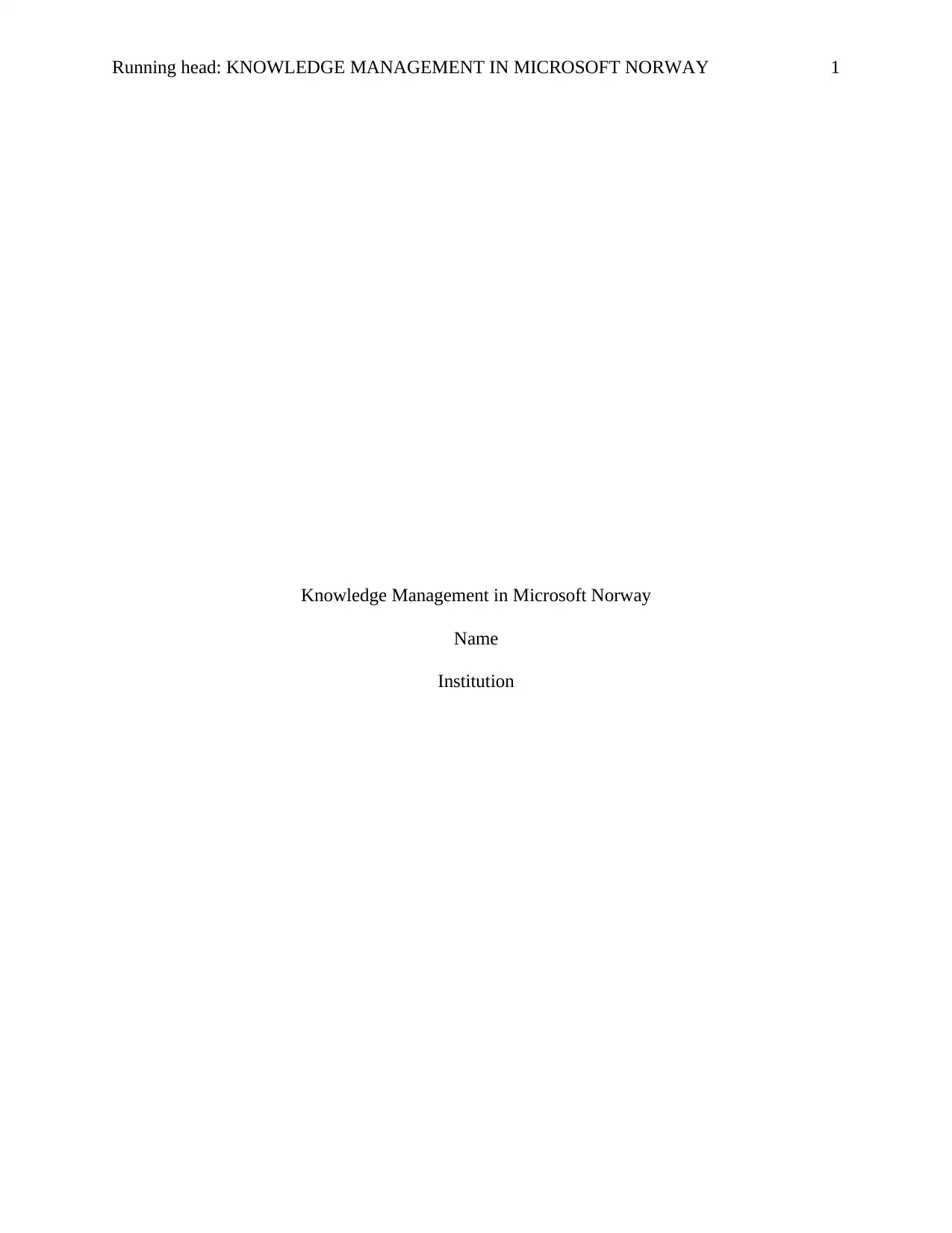
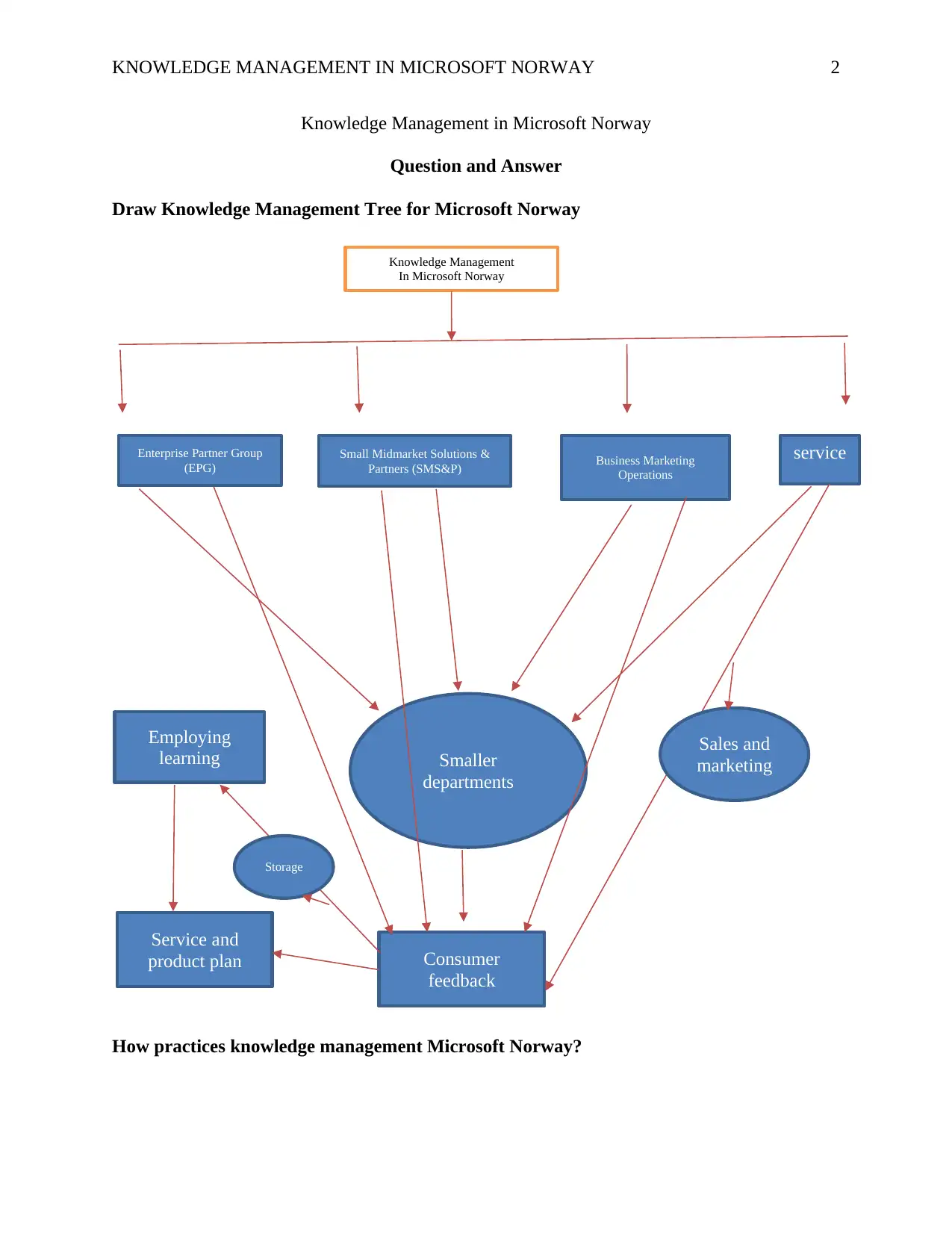
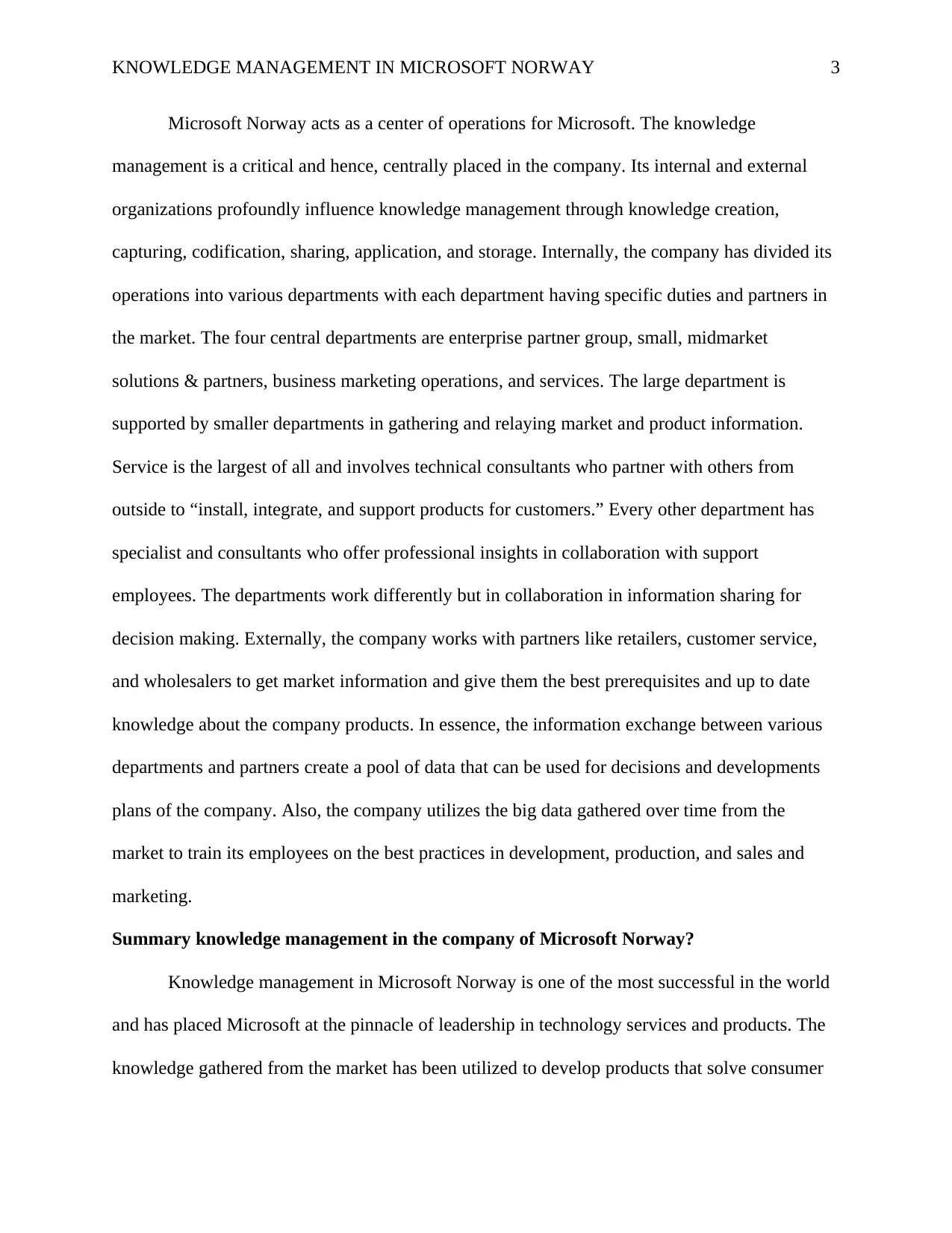

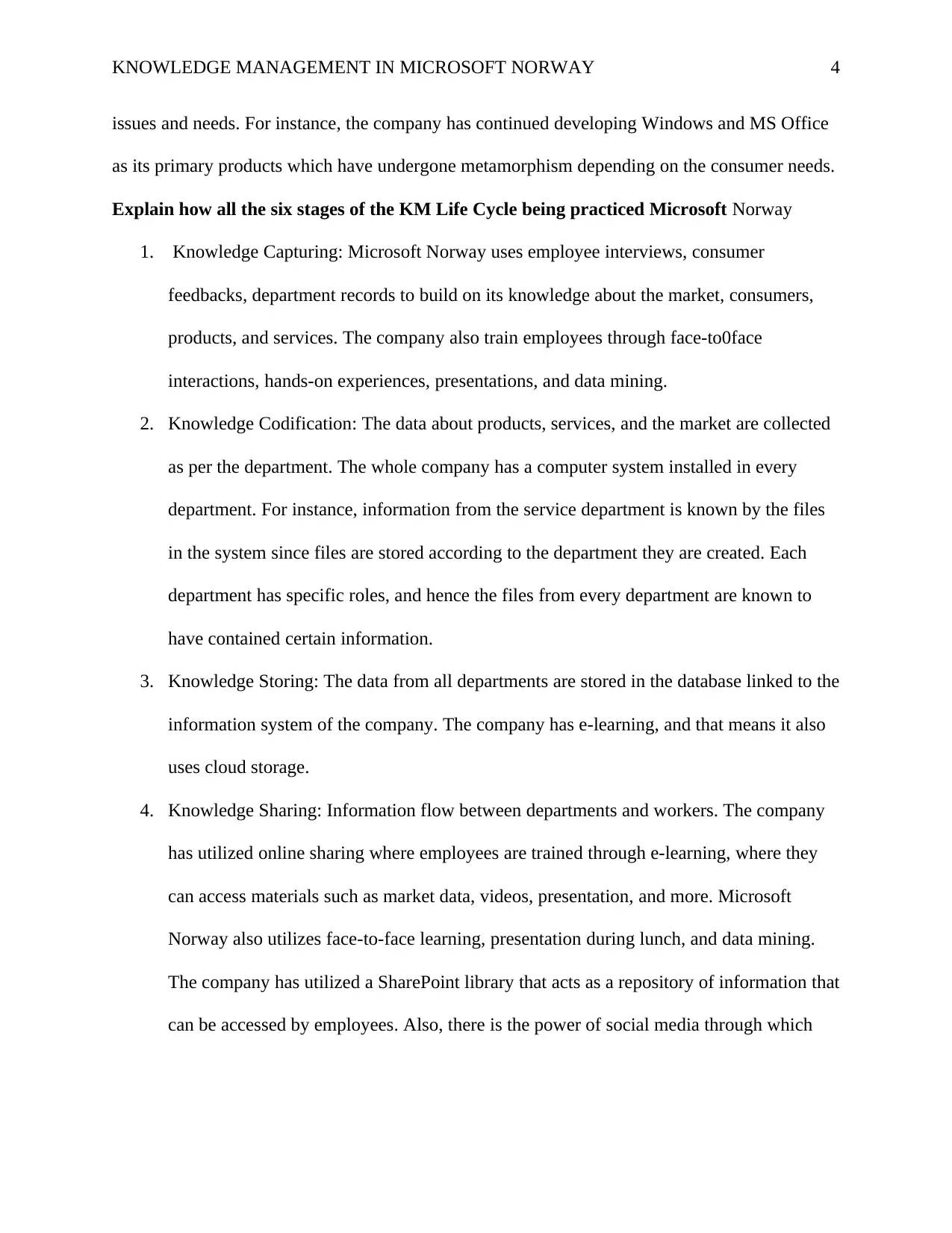
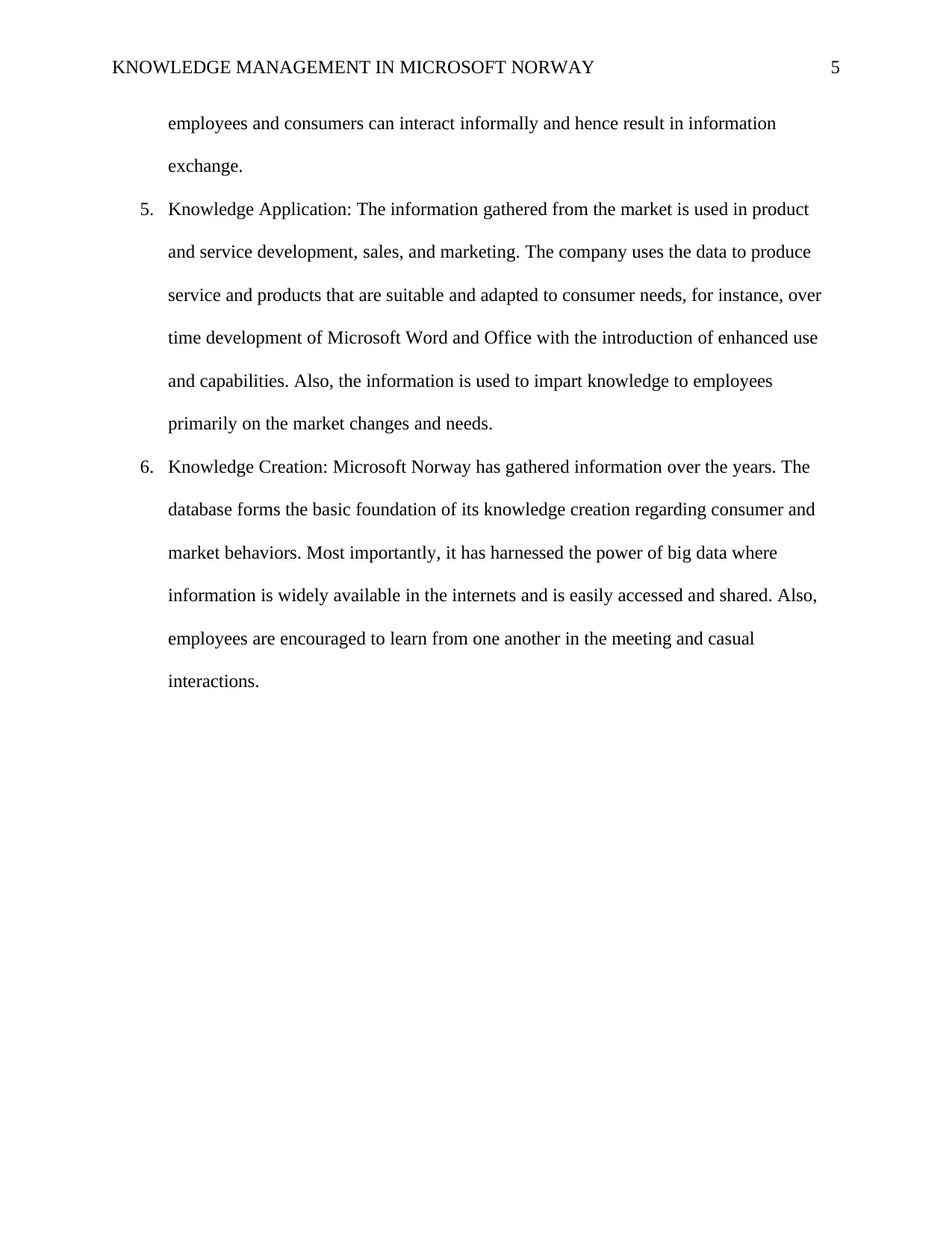





![[object Object]](/_next/static/media/star-bottom.7253800d.svg)